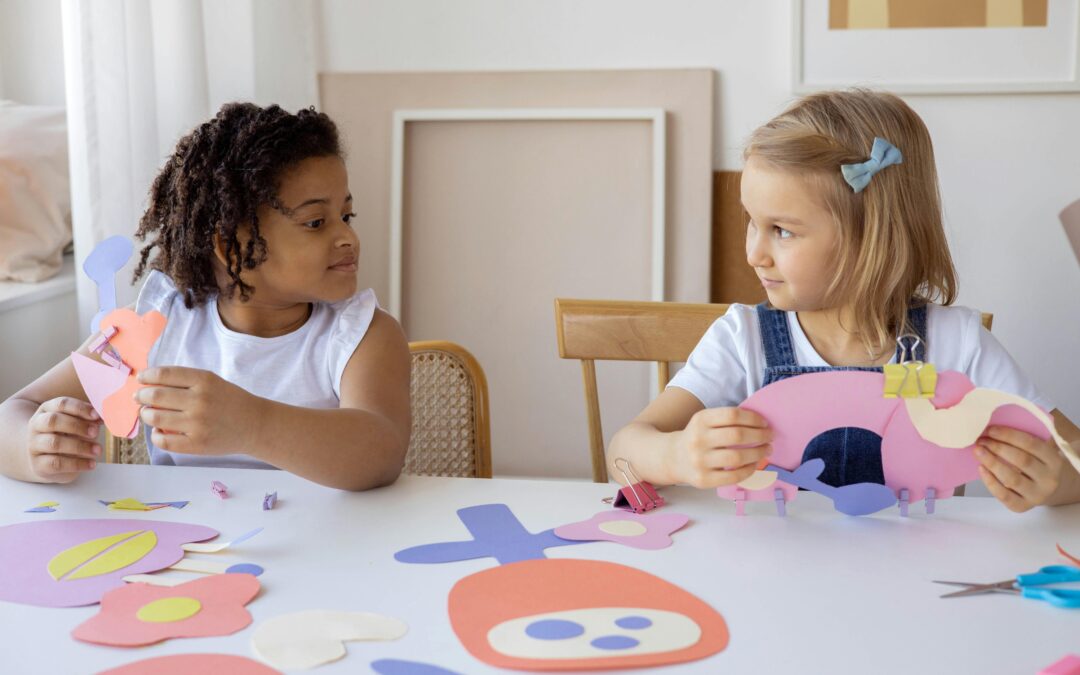Introduction
If you’ve ever spent an afternoon watching kids try to glue, paint, and cut their way through a project, you know just how magical crafting with children can be. Kids crafts aren’t just about keeping little hands busy—they’re a way to spark imagination, encourage problem-solving, and create memories that last a lifetime. I’ve spent countless weekends at the kitchen table with glue sticks, fabric scraps, and a mountain of yarn, and honestly, some of the messiest projects end up being the most memorable.
Why Kids Crafts Are So Important
There’s something special about letting kids explore creativity without rules. Whether it’s making a holiday decoration, a simple scrapbook page, or a fabric-and-yarn animal, the process is just as important as the finished product. Crafts help develop fine motor skills, teach patience, and give children a sense of accomplishment. And from a parent or teacher perspective, it’s a wonderful way to bond while subtly introducing concepts like colors, shapes, and sequencing.
Making Crafting Fun and Accessible
The key to successful kids crafts is keeping materials simple and accessible. I like to gather a mix of crafting essentials that are safe, easy to handle, and versatile. Paper, fabric scraps, yarn, glue, stickers, and a few basic tools can go a surprisingly long way. I often let kids pick what they want to use—it gives them ownership of their creations and sparks ideas I might never have thought of. Even a simple scrap of fabric can become a hat for a paper doll or the wings of a homemade butterfly.
Another thing I’ve learned is that kids don’t need perfection—they need freedom. Some of my favorite projects are the ones that start messy and chaotic but end up looking charming and whimsical. And if a little glitter ends up everywhere, that’s part of the fun!
Projects That Grow With Age
Kids crafts can be tailored to different ages and skill levels. For toddlers, simple cutting, pasting, and coloring projects work best—they’re learning to use tools and explore textures. Elementary-aged children can handle more structured activities like creating a scrapbook page, making seasonal & holiday crafts, or weaving small pieces of yarn into cards. As kids get older, they can dive into specialty crafts like jewelry & accessories making, DIY home decor items, or even mixed-media art that combines scrapbooking & paper crafts with fabric accents.
What’s great is that these projects often grow with your kids. A project that starts as a simple paper collage can turn into a keepsake for the family, a decoration for the home, or a personalized gift for a friend.
Organizing and Setting Up a Kids Craft Space
Having a dedicated space for kids crafts makes a world of difference. I like to keep everything accessible: a low table, bins for crafting tools & supplies, and a small shelf for materials like fabric & yarn, stickers, and paper. Organization isn’t just about neatness—it’s about encouraging kids to develop habits that make crafting easier and more enjoyable. When everything has a place, children can focus on being creative rather than hunting for scissors or glue.
I also try to keep things flexible. A roll of butcher paper on the floor can turn into a giant painting surface, while small containers keep tiny beads or buttons organized for more detailed projects. Rotating materials seasonally—like autumn leaves, holiday-themed paper, or yarn in festive colors—keeps projects fresh and exciting.
Making Crafts a Family Tradition
One of the most rewarding things about kids crafts is how they bring families together. Weekend mornings, rainy afternoons, or holiday breaks become opportunities to sit together, experiment, and laugh over “oops” moments. Over time, these projects build a collection of memories—scrapbooks full of colorful pages, handmade gifts, and walls adorned with DIY home decor. Crafting with kids isn’t just about the end product; it’s about creating experiences, teaching patience, and sharing joy.
And honestly, I find that some of my favorite moments happen when kids come up with ideas I never would have imagined. Their creativity is contagious.
Conclusion
Kids crafts are more than just a way to keep children busy—they’re a chance to inspire imagination, strengthen bonds, and create tangible memories that will be treasured for years. By keeping materials accessible, projects age-appropriate, and the process relaxed and fun, you can transform ordinary afternoons into creative adventures. From fabric & yarn projects to scrapbooking & paper crafts, from seasonal & holiday crafts to small DIY home decor, there’s no limit to what you can explore together.

